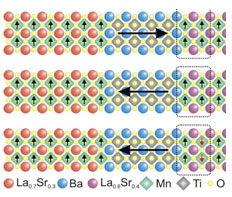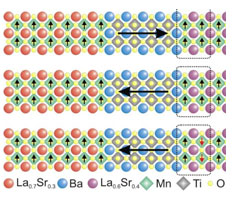Switched on ferroelectrics
As we move beyond silicon-based electronics, degrees of freedom other than charge (for example spin and polarization) will become prominent in devices. An example is the ferroelectric tunnel junction, which utilizes electric polarization to control electron transport. In addition, multiferroic material systems have shown promise in controlling magnetism through electrical means.
In their paper in Physical Review Letters, John D. Burton and Evgeny Tsymbal, of the University of Nebraska-Lincoln, US, use first-principles density-functional calculations to explain how combining a ferroelectric tunnel junction with a magnetic electrode may generate a giant tunneling electroresistance effect (i.e., a change in resistance with reversal of ferroelectric polarization).
The proposed device relies on a manganite electrode that changes from a ferromagnet to an antiferromagnet as the hole density increases. At the interface between the ferroelectric and the manganite, polarization charges in the ferroelectric are screened by opposite charges building up in the manganite, resulting in a change in hole concentration. For an appropriately doped manganite, the transition to antiferromagnetism can be induced near the interface by reversing ferroelectric polarization. The induced change in magnetic order near the interface results in a change in tunneling conductance. The effect can be tested by building a series of ferroelectric tunnel junctions with a variety of doped manganite electrodes. Above a critical doping, the predicted effect should appear. – Daniel Ucko





